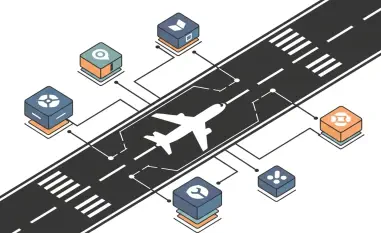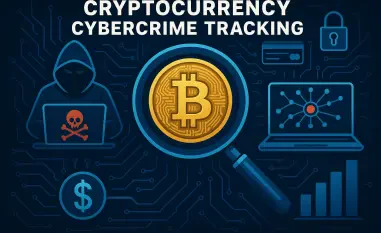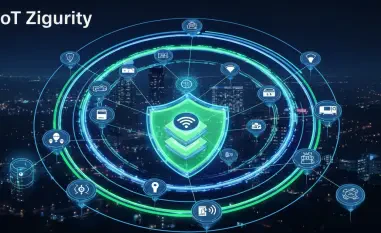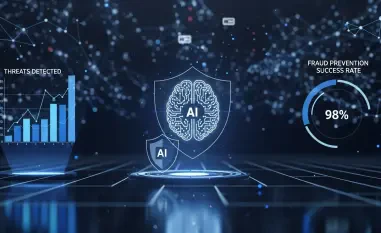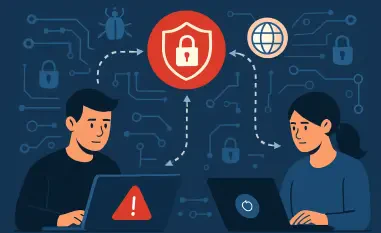Malik Haidar, a renowned cybersecurity expert, joins us to delve into the recent arrests connected to significant cyber-attacks on UK retailers. His profound expertise in corporate cybersecurity and threat analysis offers keen insights into this unfolding investigation and its broader implications for the industry.
What led to the arrests of the four individuals in connection with the April cyber-attacks on UK retailers?
The arrests were driven by ongoing investigations into cyber-attacks against Marks & Spencer, Co-op, and Harrods, all targeted in April. These individuals were linked to offenses such as computer misuse, blackmail, and money laundering. The coordinated efforts of law enforcement agencies were pivotal in tracing activities back to these suspects, showcasing a thorough and strategic approach to tackling cyber threats.
Can you describe the role of the National Crime Agency’s National Cyber Crime Unit in this investigation?
The NCA’s National Cyber Crime Unit played a central role, leading a robust investigation into the attacks. They leveraged specialist cybercrime investigators to work swiftly and effectively, prioritizing this as a top agenda. Their goal has been to identify and bring those responsible to justice, continuously integrating their efforts with partners both in the UK and abroad.
What specific charges have been brought against the suspects?
The suspects face charges related to the Computer Misuse Act, which is crucial for addressing unauthorized access to computer systems. Additionally, they are charged with blackmail, money laundering, and participating in organized crime group activities, reflecting the multifaceted nature of cybercrime operations.
How were the suspects apprehended, and what was seized during the arrests?
Suspects were apprehended at their residences in strategic locations including the West Midlands, Staffordshire, and London. The operation involved seizing electronic devices from their homes, which are currently undergoing digital forensic analysis to uncover further evidence and build a comprehensive case.
What was the significance of the West Midlands in this investigation?
The West Midlands emerged as a focal point, with two suspects apprehended there, indicating a concentration of activities or operations related to the cyber-attacks. This region’s involvement underscores the need for localized vigilance and intelligence gathering in combating cyber threats.
Why is the linkage between the Harrods attack and the M&S and Co-op incidents considered a significant development?
Connecting the Harrods attack to those on M&S and Co-op represents a pivotal breakthrough. Initially, these events appeared isolated, but revealing their interconnectedness helps law enforcement craft a unified strategy against the responsible parties, enhancing the efficacy of their approach.
How did the Cyber Monitoring Centre assess the M&S and Co-op attacks as a single event before connecting them to Harrods?
The CMC assessed the initial attacks as a singular event based on the similarities in their execution and timing. However, the full scope linking Harrods emerged later, with additional intelligence revealing common perpetrators and shared methodologies across the incidents.
Can you explain the role of the retailers (M&S, Co-op, Harrods) in assisting law enforcement during this investigation?
Retailers like M&S, Co-op, and Harrods played a crucial role by cooperating closely with law enforcement. Their support provided operational insights and data essential for piecing together the sequence of events, demonstrating the importance of collaboration between businesses and authorities in resolving cyber threats.
What is the Scattered Spider hacking collective, and how are they connected to these retail attacks?
Scattered Spider is a notorious collective known for sophisticated cyber operations. They orchestrated the attacks using infrastructure from DragonForce, aligning with various actors to target retailers in a coordinated manner, showcasing their capabilities in orchestrating large-scale disruptions.
Who is DragonForce, and what was their role according to evidence presented in the UK Parliament?
DragonForce is a ransomware operator implicated in providing infrastructure for the attacks. Their role was highlighted during UK parliamentary evidence as a key collaborator with Scattered Spider, contributing resources that facilitated the execution of these complex cyber assaults.
How are the recent findings about Scattered Spider’s activities relevant to other industries, such as airlines?
Recent findings about Scattered Spider showcase their expanded threat landscape, actively targeting industries like airlines with ransomware and data extortion. This highlights their versatile attack strategies and underscores the necessity for cross-sector vigilance against such evolving threats.
Why is public cooperation with law enforcement emphasized following cybercrime incidents?
Public cooperation amplifies the capacity to identify and dismantle hacker networks swiftly. It builds a united front, integrating public and private resources, fostering transparency, and encouraging proactive reporting, which is vital for preventing future cyber incursion.
How do these arrests fit into the broader efforts to combat cybercrime both nationally and internationally?
These arrests symbolize a substantial leap in national efforts to curb cybercrime. They bolster international collaborations, setting precedents for tracking and prosecuting cybercriminals across borders, thereby tightening the global cybersecurity net.
What future actions do you expect from the NCA and its partners in addressing this hacking collective?
I anticipate continued escalations of investigations, utilizing sophisticated forensic techniques to unravel remaining threads linked to the collective. Collaborative actions with international bodies and enhanced cybersecurity policies are likely, aiming to mitigate further incursions and bolster defenses.
How might the outcomes of this investigation influence policy or procedures in preventing future cyber-attacks on retailers?
These outcomes could catalyze policy reforms, emphasizing resilience-building among retailers. Enhanced surveillance, sharing intelligence, and strengthening procedural responses can be anticipated, aiming to insulate the sector against recurring threats and improve industry-wide cybersecurity protocol.


